Prioritizing Customer Retention and Acquisition for Business Success
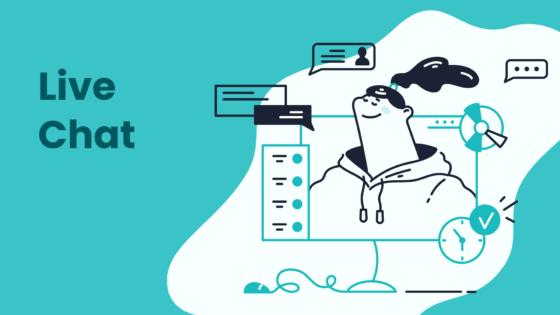
How do you decide between focusing on customer acquisition and retention? The answer lies in aligning your strategy with your business goals. Research shows that acquiring a new customer costs $226 on average, while retaining one is less expensive and more profitable. Loyal customers spend 67% more during their later relationship stages, contributing 65% of a company’s revenue. A balanced approach ensures sustainable growth.
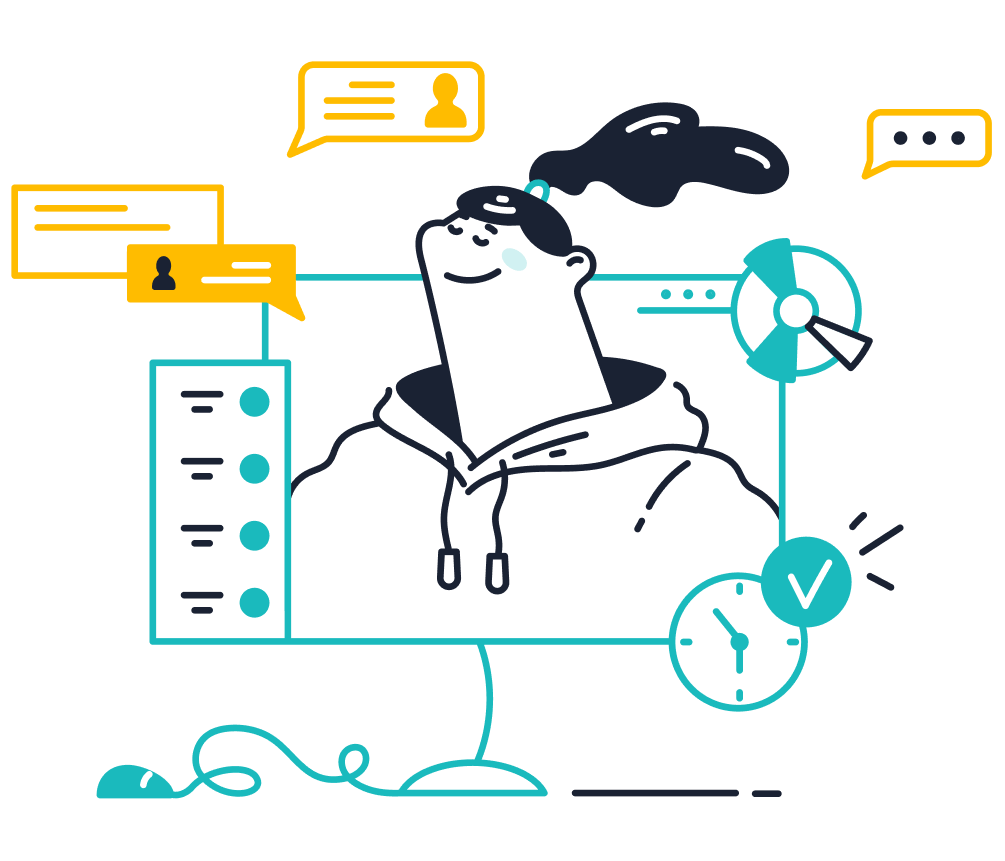
Tools like Sobot help you achieve this balance in customer acquisition and retention. With a 92% customer satisfaction rate and a 20% increase in conversions, Sobot enhances engagement and builds loyalty. By integrating Sobot into your strategy, you can maintain strong relationships while attracting new customers.
Defining Customer Acquisition and Retention
What is Customer Acquisition?
Customer acquisition refers to the process of attracting and converting potential buyers into paying customers. It involves strategies like advertising, promotions, and personalized outreach to generate interest and drive purchases. Businesses often measure the success of these efforts through metrics like Customer Acquisition Cost (CAC).
Here’s a quick look at the average CAC across industries:
| Industry | Average Customer Acquisition Cost (CAC) |
|---|---|
| Legal Services | $749 |
| Manufacturing | $723 |
| Real Estate | $791 |
| B2B SaaS | $239 |
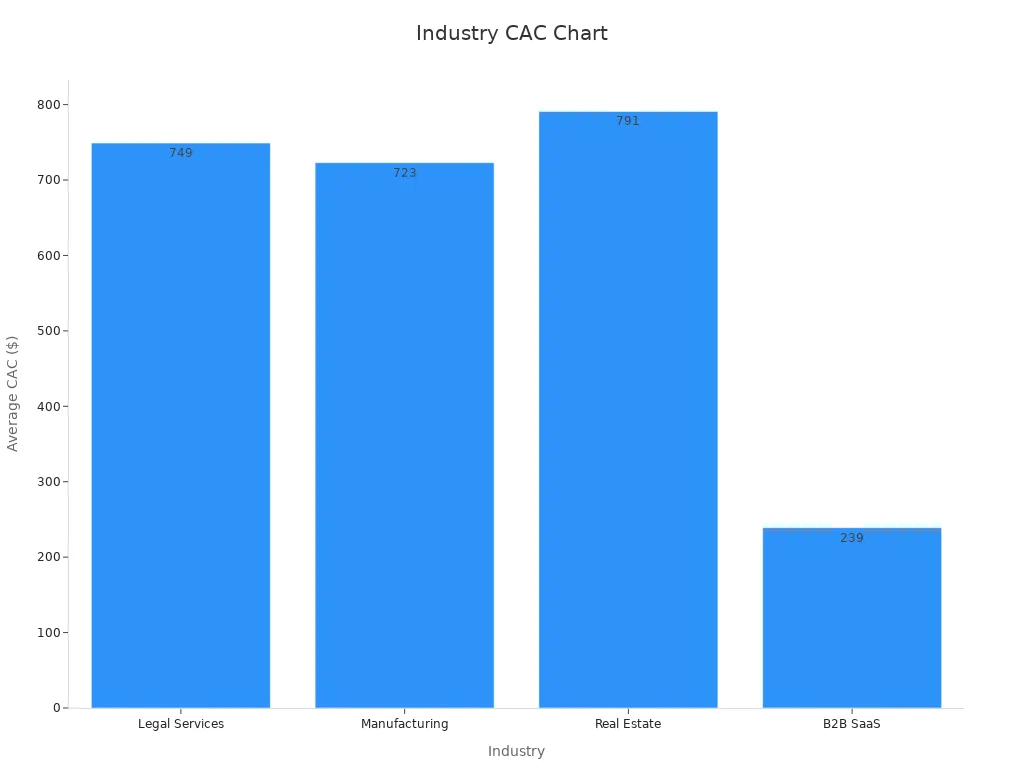
Marketers face challenges in this area. For example, 61% of them struggle with generating traffic and leads, while 73% of CMOs believe they must improve their customer acquisition strategies to stay competitive.
What is Customer Retention?
Customer retention focuses on keeping your existing customers engaged and loyal to your brand. It involves delivering exceptional experiences, offering value, and building trust over time. Retention strategies often include loyalty programs, personalized communication, and proactive customer support.
Retention rates vary by industry. For instance:
| Industry | Average Customer Retention Rate |
|---|---|
| Energy/Utilities | 89% |
| Computer Software | 86% |
| Banking | 75% |
| Hospitality & Travel | 55% |
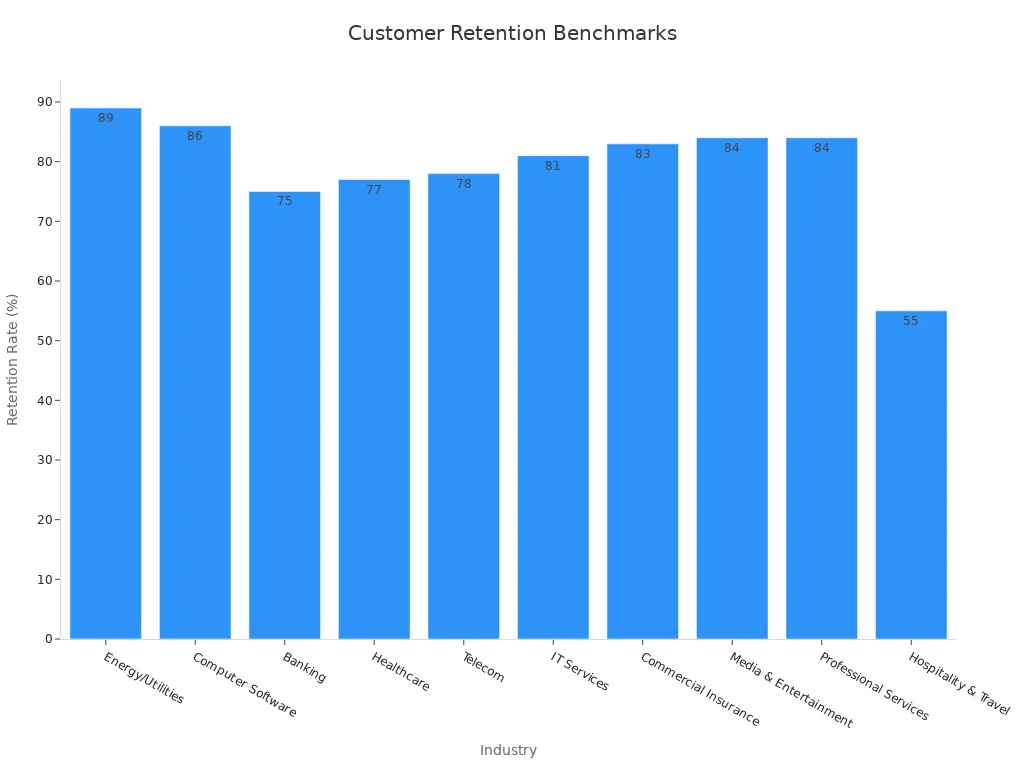
High retention rates often indicate satisfied customers who are more likely to make repeat purchases and recommend your business to others.
Why Both Are Essential for Customer Success
Balancing acquisition and retention is key to long-term success. Customer success teams play a vital role in this balance. They refine the ideal customer profile, helping you target the right audience and reduce churn. Satisfied customers often become advocates, sharing testimonials and driving referrals.
Additionally, aligning sales, marketing, and customer success ensures a seamless experience. This alignment enhances both acquisition and retention efforts, creating a cycle of growth. By focusing on both areas, you can attract new customers while keeping your existing ones happy and loyal.
Key Factors Influencing Prioritization
Business Model and Growth Stage
Your business model and growth stage play a critical role in determining whether to focus on customer acquisition or retention. Startups in the creation stage often prioritize acquisition strategies to build a customer base. At this stage, the primary goal is to understand the "job to be done" and align the business model to meet that need.
As businesses mature into the sustaining innovation stage, the focus shifts to balancing acquisition and retention. Companies evaluate how well new opportunities align with their existing customer base and whether these innovations can expand their market. Finally, in the efficiency stage, businesses prioritize retention to maximize profitability and reduce costs.
| Stage | Focus | Key Questions |
|---|---|---|
| Creation Stage | Understanding the primary business and discovering the job to be done. | What is the job to be done? How can we pivot the business model to fulfill this job? |
| Sustaining Innovation Stage | Evaluating fit between opportunities and existing business based on job consistency. | Does the innovation improve our ability to serve the existing job? Does it grow our market? |
| Efficiency Stage | Evaluating impact on balance sheet and cost efficiency. | Does the innovation allow us to serve customers at lower costs? Can we use our capital more efficiently? |
Businesses that align their strategies with their growth stage often experience faster business growth and higher profitability. For example, companies with strong customer experience (CX) strategies see 1.5x higher revenue growth and 1.8x higher profitability.
Industry-Specific Dynamics
The industry you operate in also influences whether you should prioritize acquisition or retention. Industries with high customer churn, such as hospitality and travel, often focus on retention to improve loyalty. On the other hand, sectors like technology and e-commerce may emphasize acquisition strategies to capture market share in competitive landscapes.
Data quality is another critical factor. Poor data costs U.S. businesses over $611 billion annually, and 64% of marketers face challenges with data accuracy. Inaccurate data can lead to failed business objectives, with 40% of companies reporting such issues. Additionally, 91% of customers refuse to return after a bad experience, making it essential to prioritize retention in industries where customer satisfaction is paramount.
| Statistic | Value |
|---|---|
| Bad data costs U.S. businesses | More than $611 billion annually |
| 64% of successful data-driven marketers face challenges with data quality | 64% |
| Customers unwilling to return after a bad experience | 91% |
| Business objectives failing due to inaccurate data | 40% |
Understanding these dynamics helps you tailor your strategies to meet industry-specific challenges and opportunities.
Customer Lifecycle and Behavior
Customer behavior and lifecycle metrics provide valuable insights into prioritizing acquisition or retention. Metrics like Customer Acquisition Cost (CAC) and Conversion Rate help you evaluate the effectiveness of your acquisition strategies. Meanwhile, Customer Lifetime Value (CLV) and Churn Rate highlight the importance of retention.
For instance, a high CAC may indicate the need to optimize acquisition efforts, while a low CLV suggests a focus on retention to increase customer value. Acting on customer feedback can boost retention by 15%, and companies with strong CX leadership achieve satisfaction rates of 90%.
| Metric | Description |
|---|---|
| Customer Acquisition Cost | Indicates the total cost incurred to acquire a new customer. |
| Conversion Rate | Measures the percentage of users who take a desired action after engaging with a marketing effort. |
| Customer Lifetime Value | Represents the total revenue expected from a customer throughout their relationship with the business. |
| Churn Rate | Reflects the percentage of customers who stop using the service over a specific time frame. |
| Net Promoter Score | Gauges customer loyalty by measuring the likelihood of customers recommending the business. |
By analyzing these metrics, you can identify areas for improvement and create a balanced strategy that supports both acquisition and retention.
Resource Allocation and Budget Considerations
Effective resource allocation and budget planning are essential for achieving success in customer acquisition and retention strategies. Without a clear financial plan, you risk overspending or misusing resources, which can hinder your business growth.
Why Budgeting Matters
A well-structured budget acts as your financial compass. It guides how you allocate resources and ensures you don’t exceed your financial limits. For example, when you set a budget for marketing campaigns, you can focus on channels that deliver the best results. This approach prevents wasteful spending and maximizes your return on investment.
Budgets also help align your marketing efforts with your business goals. If your objective is to improve customer retention, your budget should prioritize tools and strategies that enhance loyalty. On the other hand, if your focus is on acquiring new customers, you might allocate more funds to advertising and lead generation.
| Key Point | Explanation |
|---|---|
| Role of Budget | A budget acts as a financial compass, guiding resource allocation and preventing overspending. |
| Alignment with Goals | Budgets help align marketing efforts with business objectives, ensuring effective use of resources. |
| Resource Allocation | Strategic distribution of resources maximizes impact and enhances the chances of success in marketing initiatives. |
Strategic Resource Allocation
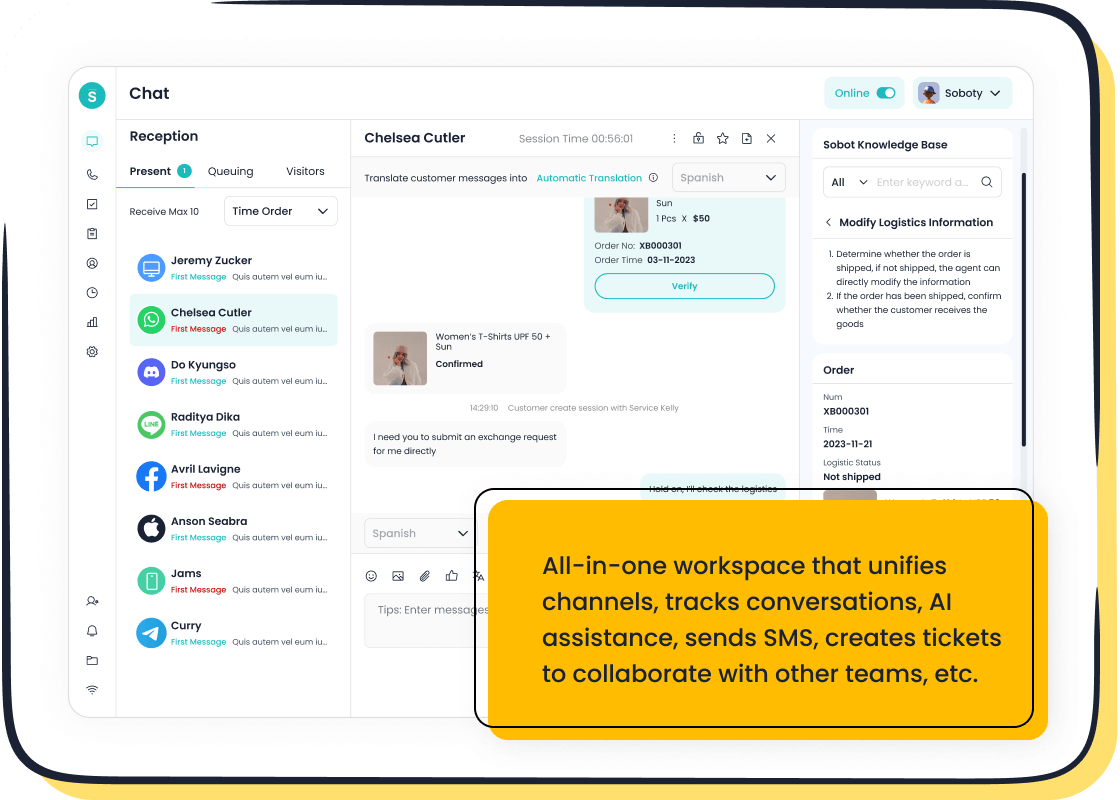
Allocating resources strategically ensures that every dollar you spend contributes to your goals. For instance, investing in tools like Sobot Live Chat can enhance customer engagement and improve retention rates. This platform allows you to interact with customers across multiple channels, providing a seamless experience that builds loyalty.
When deciding how to allocate resources, consider the following:
- Customer Needs: Focus on solutions that address your customers’ pain points. For example, if customers value quick responses, invest in tools that improve response times.
- Business Priorities: Align your spending with your current objectives. If your goal is to increase customer lifetime value, prioritize retention strategies like loyalty programs.
- Performance Metrics: Use data to identify which strategies deliver the best results. Metrics like customer acquisition cost and retention rate can guide your decisions.
Balancing Acquisition and Retention Investments
Balancing your investment in retention and acquisition is crucial for sustainable growth. While acquiring new customers is important, retaining existing ones often provides a higher return on investment. Loyal customers tend to spend more and recommend your business to others, making them valuable assets.
For example, if your retention rate is low, you might need to allocate more resources to improving customer satisfaction. This could involve enhancing your support services or offering personalized rewards. On the other hand, if your customer base is small, you may need to focus on acquisition strategies to expand your reach.
By carefully planning your budget and allocating resources strategically, you can achieve a balance that supports both acquisition and retention efforts. This approach not only maximizes your financial efficiency but also strengthens your overall customer strategy.
Crafting a Customer Acquisition Strategy
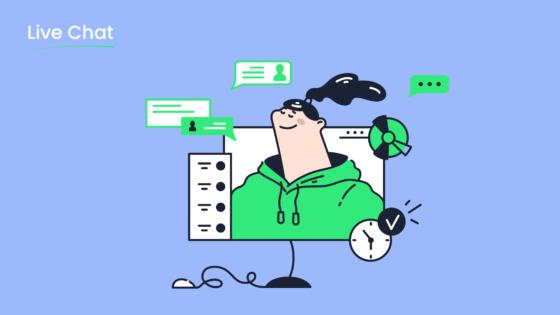
Leveraging Sobot Live Chat for Customer Engagement
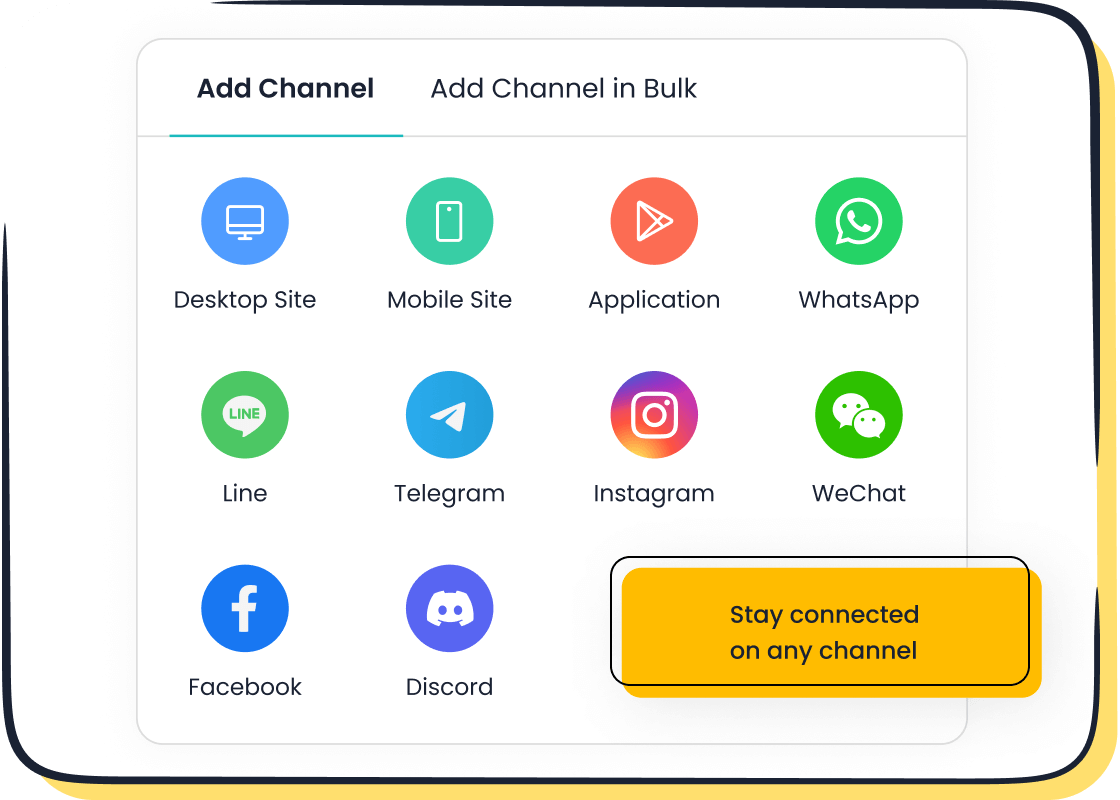
Engaging with customers in real-time can significantly improve your customer acquisition strategy. Sobot Live Chat offers a seamless way to connect with visitors across multiple channels, including websites, apps, and social media platforms like WhatsApp and Facebook. This omnichannel approach ensures you meet customers where they are, increasing acceptance rates and reducing missed opportunities.
Statistics show that 79% of businesses report improved sales due to live chat, while 49% experience higher conversions. Additionally, 52% of consumers are more likely to repurchase from companies offering live chat support. Sobot Live Chat enhances engagement by using AI-powered tools to provide personalized responses, boosting customer satisfaction to 73%.
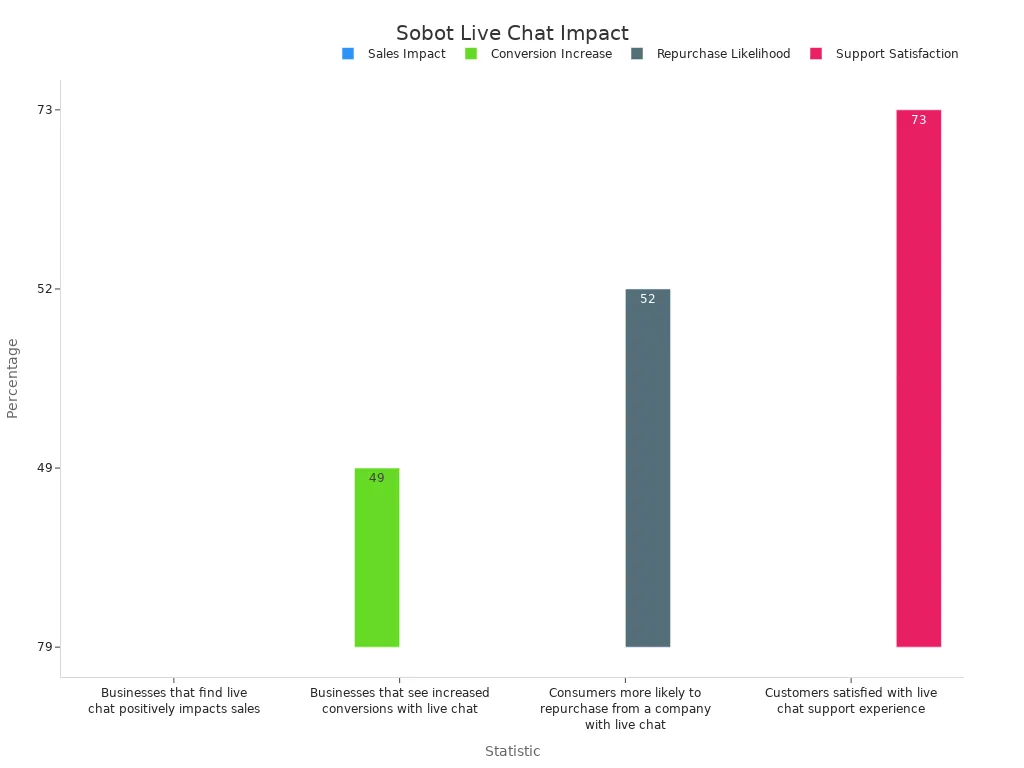
By integrating Sobot Live Chat into your customer acquisition strategy, you can convert visitors into loyal customers while fostering long-term relationships.
Building Awareness Through Multichannel Marketing
Multichannel marketing is essential for building brand awareness and driving new customer acquisition. By leveraging platforms like social media, email, and messaging apps, you can reach a broader audience and create consistent messaging across channels.
Nearly 48% of promotional teams use multichannel marketing to enhance brand recognition. Metrics such as social media engagement, return on investment, and customer acquisition cost highlight its effectiveness. For example, presence across multiple channels increases familiarity, making your brand more recognizable to potential customers.
Sobot’s marketing solution supports multichannel campaigns by providing tools for personalized messaging and advanced analytics. These features help you track ROI and optimize your efforts, ensuring your resources are allocated effectively. With Sobot, you can create impactful campaigns that attract and engage customers across various platforms.
Converting Leads into Customers with Personalization
Personalization plays a pivotal role in converting leads into paying customers. Tailored experiences make prospects feel valued, increasing their likelihood of completing desired actions. For instance, automated systems that send targeted emails based on website actions can boost conversion rates by 20%. Personalized email campaigns aligned with recent visits can achieve a 25% increase in lead conversion, while marketing automation systems tailored to contact behavior can deliver a 30% higher conversion rate.
| Example Description | Result |
|---|---|
| Automation system sending targeted emails based on website actions | 20% increase in conversion rates |
| Personalized email campaigns based on recent website visits | 25% increase in lead conversion |
| Marketing automation system aligning messages with contact behavior | 30% higher conversion rate |
Sobot Live Chat enhances personalization by segmenting customers and providing tailored responses based on their profiles. This approach not only improves conversion rates but also builds trust and loyalty. By focusing on personalization, you can turn leads into long-term customers and strengthen your acquisition strategy.
Enhancing Customer Retention for Long-Term Success

Strengthening Relationships with Loyalty Programs
Loyalty programs are a proven way to strengthen relationships with your customers. These programs reward repeat purchases, making customers feel valued and appreciated. Studies show that 80% of companies measuring the ROI of loyalty programs report positive results, earning 4.9 times more revenue than they spend. Additionally, 60% of consumers change their spending behavior due to loyalty program membership, increasing their purchasing frequency and willingness to recommend the brand.
You can design loyalty programs that offer personalized rewards, discounts, or exclusive access to products. For example, a coffee shop might provide a free drink after every ten purchases, encouraging repeat visits. Sobot’s marketing solution can help you create and manage such programs efficiently. Its advanced analytics allow you to track customer engagement and measure the success of your loyalty initiatives, ensuring they deliver long-term value.
Using Sobot Live Chat to Improve Customer Support
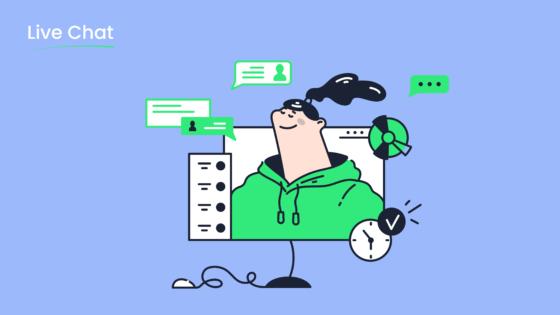
Exceptional customer support is a cornerstone of retention strategies. Sobot Live Chat enables you to provide real-time assistance across multiple channels, including websites, apps, and social media platforms. This omnichannel approach ensures you meet customers where they are, enhancing their experience and satisfaction.
Sobot Live Chat also uses AI-powered tools to deliver personalized responses, reducing resolution times and increasing efficiency. For instance, Samsung achieved a 97% customer satisfaction rate by integrating Sobot’s solutions into its support system. By addressing customer concerns promptly and effectively, you can build trust and loyalty, encouraging customers to stay with your brand for the long term.
Measuring Retention Success with Key Metrics
Tracking the right metrics is essential for evaluating the effectiveness of your retention strategies. Key performance indicators like Customer Retention Rate (CRR) and Customer Lifetime Value (CLV) provide insights into how well you are retaining existing customers and maximizing their long-term value.
Other metrics, such as Repeat Purchase Rate (RPR) and Net Promoter Score (NPS), help you understand customer loyalty and satisfaction levels. For example, a high RPR indicates that customers are returning to make additional purchases, while a strong NPS suggests they are likely to recommend your brand. Using tools like Sobot’s built-in analytics, you can monitor these metrics and refine your strategies to achieve better results.
"Your retention strategy maximizes customer lifetime value (CLV), proves more cost effective than constant acquisition, and creates predictable revenue streams through loyal customers who become brand advocates."
By focusing on these metrics, you can identify areas for improvement and implement proactive retention strategies that drive long-term success.
Balancing Acquisition and Retention for Sustainable Growth
How Retention Supports Acquisition Efforts
Retention plays a pivotal role in enhancing your acquisition strategies. When you retain customers, you create a foundation of loyal advocates who can amplify your brand's reach. Satisfied customers often share their positive experiences, leading to organic referrals and reducing your reliance on costly advertising campaigns. This cycle not only strengthens your customer base but also optimizes your customer acquisition costs (CAC).
| Evidence | Explanation |
|---|---|
| Low customer retention rates lead to ineffective customer acquisition costs (CAC) | If CAC does not translate into strong customer lifetime value (LTV), it indicates a need for improved retention strategies to enhance acquisition efforts. |
| Retaining existing customers is less expensive than acquiring new ones | This highlights the importance of focusing on retention to optimize acquisition costs. |
| Retained customers are more likely to respond positively to upsell opportunities | This suggests that effective retention strategies can directly enhance customer acquisition by increasing the lifetime value of existing customers. |
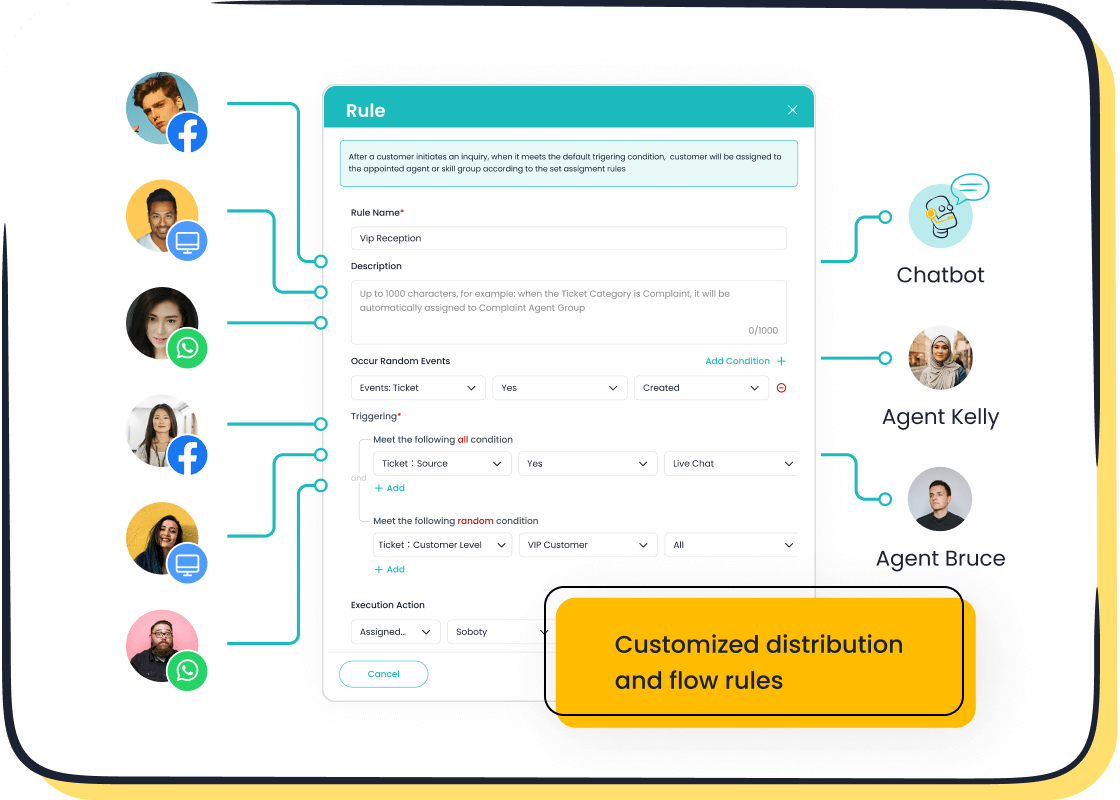
Retention also allows you to gather valuable insights into customer behavior. By analyzing patterns, you can identify at-risk customers and implement targeted strategies to re-engage them. Predictive tools like Sobot Live Chat help you act on these insights by offering personalized support and timely interventions. Increased loyalty from these efforts can lead to better acquisition outcomes, as loyal customers often become your most effective brand ambassadors.
Cross-Selling and Upselling Opportunities
Cross-selling and upselling are powerful strategies for maximizing the value of your existing customers while supporting your acquisition goals. These techniques involve offering complementary products or premium upgrades to customers who already trust your brand. For instance, a customer purchasing a smartphone might also be interested in accessories like headphones or a protective case.
To make these strategies effective, you need to rely on data-driven insights. Analytics tools, such as those integrated into Sobot’s marketing solutions, can help you identify purchase patterns and segment customers based on their preferences. This segmentation enables you to tailor your offers, increasing the likelihood of conversion.
- Gathering customer feedback can indicate the effectiveness of cross-selling and upselling strategies in enhancing customer experience.
- A/B testing allows you to compare different approaches and determine which yields better results.
- Calculating ROI helps assess the financial impact of these strategies by comparing implementation costs to additional revenue generated.
- Analytics aids in identifying customer purchase patterns and relationships, optimizing cross-selling and upselling opportunities.
- Customer segmentation through analytics enables tailored upselling offers based on customer behavior and preferences.
Sobot Live Chat enhances these efforts by providing real-time customer insights and enabling personalized interactions. For example, you can use its AI-powered tools to recommend products based on a customer’s browsing history or previous purchases. This approach not only boosts revenue but also strengthens customer relationships, making them more likely to stay loyal to your brand.
Creating a Feedback Loop for Continuous Improvement
A feedback loop is essential for refining your customer acquisition and retention strategies. This cyclical process involves collecting customer insights, analyzing them, and making adjustments based on the findings. Companies that implement real-time feedback loops can adapt 50% faster than those relying on periodic reviews, leading to significant efficiency gains.
| Evidence Description | Impact |
|---|---|
| Companies using real-time analytics tools can implement changes 50% faster than those relying on periodic reviews. | 50% faster implementation |
| Regular checkpoints and immediate reviews lead to a 40% increase in process efficiency. | 40% increase in efficiency |
Feedback loops provide actionable insights into your products and services. They help you identify areas for improvement and prioritize changes that align with customer needs. For example, satisfaction surveys conducted through Sobot Live Chat can reveal pain points in your customer journey. Addressing these issues not only improves retention but also enhances your brand’s reputation, making it easier to attract new customers.
A customer feedback loop creates a continuous cycle of improvement. Each iteration of your product or service becomes more aligned with customer expectations. This agile approach ensures your business remains relevant and responsive to evolving demands. By fostering a culture of continuous learning and adaptation, you can maintain a competitive edge in both customer acquisition and retention.
Aligning Strategies with Business Goals
Identifying Short-Term and Long-Term Objectives
Setting clear objectives ensures your customer strategies align with your business goals. Short-term goals focus on immediate improvements, while long-term goals aim for sustained growth. For example:
| Objective Type | Example |
|---|---|
| Long-term Goal | Establish a cohesive brand identity across all products and marketing materials within two years. |
| Short-term Goal | Decrease website bounce rate by 20% in the next six months through improved navigation. |
| Short-term Goal | Complete the development of a new mobile application feature within the next three months. |
| Short-term Goal | Improve project completion rates by 15% over the next six months using agile methodologies. |
| Short-term Goal | Achieve a 20% increase in organic traffic in quarterly SEO reports. |
To succeed, you should:
- Set objectives that align with your overall business strategy.
- Allocate resources effectively and communicate expectations clearly.
- Involve stakeholders in the process to ensure alignment.
- Implement risk management strategies to address potential challenges.
Balancing short-term and long-term initiatives helps you respond to market changes while maintaining focus on sustainable growth. For instance, agile management supports quick decision-making, while strategic planning ensures your business remains competitive over time.
Adapting Strategies as Business Needs Evolve
Dynamic markets require flexibility. Adapting your strategies ensures you stay relevant and meet customer expectations. Data analytics plays a crucial role in identifying market shifts and informing decisions. Predictive tools forecast future trends, helping you prepare for changes.
Flexibility allows you to pivot when necessary. For example, diversifying product lines or exploring new revenue streams can safeguard your business against unexpected events. Scenario planning and risk management also prepare you for challenges.
Focusing on customer satisfaction strengthens loyalty, even during market fluctuations. Enhancing customer service and offering personalized experiences differentiate your brand. These efforts not only retain existing customers but also attract new ones.
Evaluating Success Through Data and Analytics
Measuring success ensures your strategies deliver results. Key metrics provide insights into customer behavior and business performance. For example:
| Metric | Description |
|---|---|
| Customer Churn Rate | Percentage of customers who stop using the product or service. |
| Monthly Recurring Revenue | Normalized calculation of predictable revenue on a monthly basis for subscription-based companies. |
| Net Promoter Score (NPS) | Measures customer satisfaction and loyalty based on their likelihood to recommend the product. |
| Customer Retention Rate | Percentage of customers who continue to use the product over a specific period. |
Using tools like Sobot’s built-in analytics, you can track these metrics and refine your strategies. For instance, a high churn rate may signal the need for improved customer support. A strong NPS indicates satisfied customers who are likely to recommend your brand.
By evaluating these metrics regularly, you can identify areas for improvement and ensure your strategies align with your business goals. This data-driven approach helps you achieve both short-term wins and long-term success.
Balancing customer acquisition and retention is essential for sustainable growth. Retaining customers is five to 25 times cheaper than acquiring new ones, and a 5% increase in retention can boost profits by 25% to 95%. Loyal customers contribute 65% of revenue and spend 67% more over time, highlighting their value to your business.
Aligning your customer success strategies with business goals ensures customer needs are met proactively. This approach fosters long-term relationships and maximizes customer lifetime value. Tools like Sobot Live Chat enhance customer experience by reducing churn and increasing satisfaction rates to 97%. By integrating such solutions, you can optimize both acquisition and retention efforts, driving predictable revenue growth.
"Retaining customers not only reduces churn but also creates advocates who amplify your brand through referrals, ensuring a cycle of success."
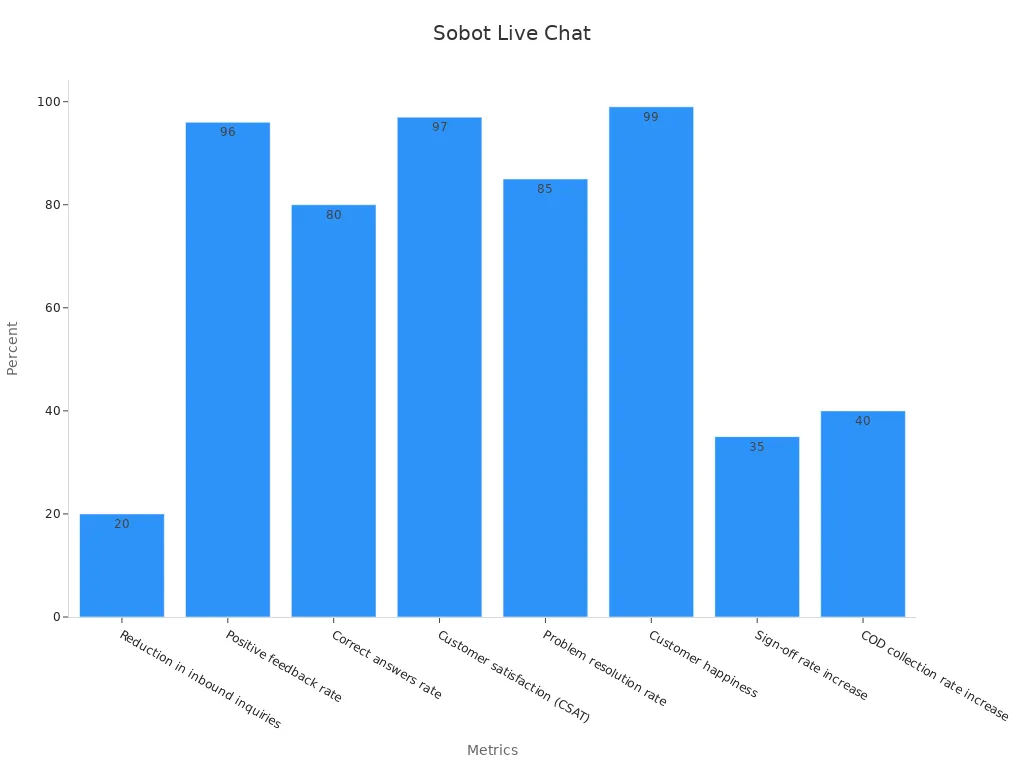
FAQ
What is the difference between customer acquisition and retention?
Customer acquisition focuses on attracting new customers, while retention ensures existing customers stay loyal. Acquisition involves marketing and promotions to gain attention. Retention emphasizes delivering value and building trust to maintain relationships. Both are essential for a balanced customer success strategy.
How does Sobot Live Chat improve customer engagement?
Sobot Live Chat connects you with customers instantly across multiple channels. Its AI-powered tools provide personalized responses, ensuring quick and efficient communication. This approach enhances customer satisfaction and builds loyalty, making it easier to retain and convert customers.
Why is balancing acquisition and retention important?
Balancing acquisition and retention ensures sustainable growth. Acquiring new customers expands your reach, while retaining existing ones increases profitability. Loyal customers spend more and recommend your brand, creating a cycle of success that supports long-term business goals.
How can I measure the success of my retention strategies?
You can track metrics like Customer Retention Rate (CRR), Customer Lifetime Value (CLV), and Net Promoter Score (NPS). These indicators reveal how well you retain customers and maximize their value. Tools like Sobot’s analytics simplify monitoring and help refine your strategies.
What role does customer feedback play in retention?
Customer feedback identifies areas for improvement and helps you address pain points. Acting on feedback shows customers you value their opinions, strengthening trust and loyalty. Real-time feedback tools, like Sobot Live Chat, enable you to adapt quickly and enhance the customer experience.
See Also
Excelling at Live Chat Strategies for Retail Success
Best 10 Customer Feedback Tools to Use in 2024
Effective Strategies for Quality Management in Call Centers
Round-the-Clock Live Chat Assistance Enhances Business Growth
Ten Strategies to Improve Customer Satisfaction via Live Chat
